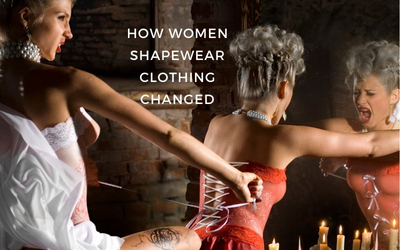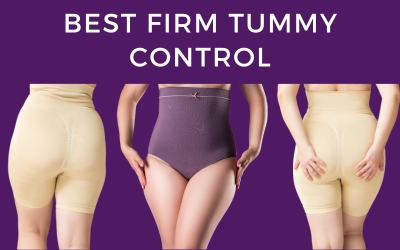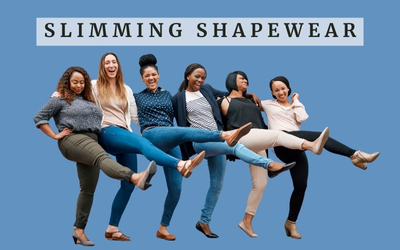Women Shapewear Clothing is one trend that transforms silhouettes, improves confidence, and has stood the test of time. Is this where fashion meets function? Undoubtedly, Women Shapewear Clothing stands out as a testament to innovation and versatility.
Over the years, this essential wardrobe component has undergone fascinating changes, blending functionality with style. In this blog post, we explore how Women Shapewear Clothing has changed. As a transformative fashion, we’ll probe and examine the significant milestones to the present fashion staple it has become.
Table of Contents
The Early Days: Foundation Garments
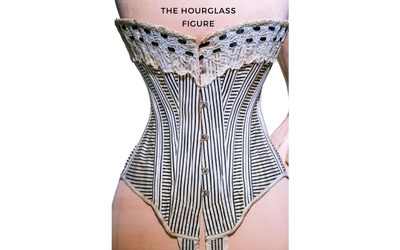
The journey of shapewear can be traced back to the Victorian era when corsets reigned supreme, shaping both silhouettes and social perceptions. In the early stages of its existence, shapewear emerged as a solution-oriented garment. These undergarments were not just pieces of clothing but specifically designed to accentuate the female form.
The aim was to provide women with a streamlined figure, enhancing their natural curves effortlessly. Much emphasis was placed on its functionality, with comfort being compromised.
As a result, the pursuit of an exaggerated hourglass figure came at the cost of comfort, as women endured tight-lacing for the sake of societal standards.
Mid-20th: Girdles – A Shift Towards Comfort
In the 20th century, girdles were popular undergarments that played a significant role in shaping and supporting women’s bodies. These foundation garments were worn primarily to achieve a desired silhouette, emphasizing a narrow waist and smooth lines. Here’s an overview of girdles during that era:
- Material and Construction: Girdles were typically made from elastic materials, combined with rigid panels or boning for structure. The construction aimed to provide firm control and support.
- Design and Styles: Girdles came in various styles, including high-waisted, mid-thigh, or full-length versions. Some featured garters to attach to stockings, contributing to the overall ensemble. The design often included hook-and-eye or zipper closures for a secure fit.
- Functionality: Girdles were designed to shape the waist, hips, and abdomen, creating an hourglass figure. They were especially popular during the mid-20th century when fashion trends emphasized a curvaceous silhouette.
- Everyday Wear: While girdles were commonly associated with formal attire and special occasions, many women wore them daily for a polished look. They were considered an essential foundation for achieving the fashionable silhouette of the time.
Girdles: No Longer Everyday Use
- Changing Fashion: As fashion evolved towards more relaxed and casual styles in the latter half of the century, girdles gradually fell out of everyday use. The rise of women’s liberation movements and changing beauty standards contributed to a shift away from restrictive undergarments.
- Legacy: Despite their decline in popularity, girdles have left a lasting impact on lingerie design. Elements of their shaping and support can be seen in modern shapewear, which continues to be a part of the lingerie market.
- Cultural Influence: Girdles were not only functional but also carried cultural significance. They were symbolic of societal expectations regarding women’s appearance and comportment, reflecting the norms of the time.
As fashion progressed through the mid-20th century, there was a perception shift in shapewear design. No longer confined to mere functionality, it embraced style and sophistication.
Girdles emerged as a more comfortable alternative to corsets providing support without the rigid constraints of the corset. This era marked a turning point, emphasizing a more natural silhouette while maintaining the shaping effect.
The 20th-century girdles were iconic undergarments that played a crucial role in shaping women’s figures according to the fashion ideals of the era. While they have largely faded from everyday use, their influence on lingerie design and their role in shaping cultural perceptions of beauty remain notable aspects of fashion history.
The 1980s: Spandex Revolution
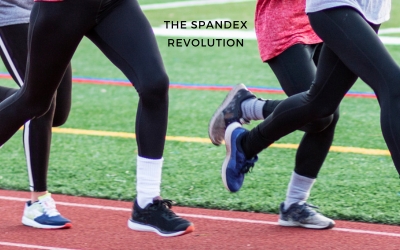
Fast forward to the 1980s, and the fashion landscape witnessed the rise of spandex. During these decades, synthetic fabric spandex gained immense popularity, transforming the fashion landscape in various ways.
Spandex, also known as Lycra or elastane, is a synthetic fiber known for its exceptional elasticity. It was first introduced in the late 1950s but gained widespread popularity in the 1980s due to its unique stretch and recovery properties.
The Spandex Revolution of the 1980s had a profound impact on women’s shapewear, influencing both the design and functionality of these undergarments. Here are several ways in which the popularity of spandex contributed to the evolution of women’s shapewear during this era:
- Enhanced Comfort and Fit: The exceptional elasticity and stretch properties from Spandex revolutionized the comfort and fit of shapewear. Traditional restrictive materials were replaced or blended with spandex, providing women with shapewear that could mold to the body’s natural curves while allowing for ease of movement.
- Versatility in Design: The introduction of spandex allowed for greater versatility in the design of shapewear. Designers could create sleek and seamless garments that could comfortably shape and support different areas of the body without the need for bulky seams or boning.
- Innovative Silhouettes: Spandex played a crucial role in the development of innovative shapewear silhouettes. Women’s shapewear evolved beyond traditional corsets and girdles, offering a broader range of options such as high-waisted briefs, shaping camisoles, and full-body suits, all made possible by the flexibility of spandex.
Adaptation to the Spandex Fashion Trend
- Adaptation to Fashion Trends: As fashion trends in the 1980s embraced form-fitting clothing, spandex-infused shapewear became essential in helping women achieve a smooth and streamlined silhouette. Shapewear was designed to work seamlessly with the tight-fitting styles popular during the disco era and beyond.
- Inclusion in Activewear: With the rise of activewear during this period, shapewear started to incorporate spandex into its designs, catering to women’s desire for both support and comfort during physical activities. This integration allowed for the creation of shapewear pieces suitable for exercise and daily wear.
- Increased Breathability: Traditional shapewear materials could be heavy and less breathable. The lightweight nature and breathability of Spandex contributed to a more comfortable experience for women wearing shapewear for extended periods.
- Cultural Acceptance: The Spandex Revolution, with its emphasis on body-conscious fashion, contributed to a cultural shift in the acceptance and celebration of diverse body shapes. Shapewear became more about enhancing natural curves and providing support, rather than conforming to rigid beauty standards.
- Continued Influence: The use of spandex in shapewear has continued to be a defining characteristic in modern iterations of these undergarments. Spandex blends with other materials offer women a combination of shaping, comfort, and style in contemporary shapewear.
Spandex Transformative Effect: How Women Shapewear Clothing Changed
No doubt, the Spandex revolution had a transformative effect on women’s shapewear, ushering in an era of comfort, versatility, and innovative design. Women embraced the freedom of movement provided by spandex while still enjoying the smoothing and contouring effects essential to shapewear.
Spandex-infused shapewear became an integral part of women’s wardrobes, adapting to the changing fashion landscape while prioritizing both functionality and fashion.
Following this period, the rise of Spanx came into being in 2000. This brand redefined the shapewear landscape. From the inception of Spanx, it had an impact on the market, and now it has become synonymous with modern shapewear.
Without giving thought to other brands, some women only refer to Spanx women shapewear clothing whenever they are purchasing shapewear. Whether it is Plus-size women shapewear clothing, the best shapewear for tummy and waist, or women’s shapewear tummy control, it’s all about Spanx.
Check out the infographic below as it gives a summary of how women shapewear clothing changed through time and trends: From the Victorian era to the 2000s.
The 21st Century: Versatility of Women Shapewear Clothing Redefined
Forwarding to the 21st century, women’s shapewear has undergone a revolutionary transformation. Today’s shapewear embraces inclusive designs catering to all body types. Technological integration has brought forth a new era of comfort and style.
The focus now shifts towards versatility, with the garment adapting to various outfit styles. The diverse range of contemporary shapewear has its influence on fashion. From bodycon dresses to tailored pants, shapewear has become the go-to secret weapon, empowering women to flaunt their bodies confidently.
- Functional Elegance: Gone are the days when shapewear was confined to purely functional roles. Today, women’s shapewear seamlessly combines form and function, providing a foundation for various outfits while exuding elegance.
- Confidence Booster: The 21st century sees women celebrating their bodies in all shapes and sizes. Shapewear plays a pivotal role as a confidence booster, empowering women to feel comfortable in their skin. Whether it’s a special occasion or everyday wear, the right shapewear can instill a sense of confidence, contributing to positive self-perception and body image.
- Inclusive Sizing and Diversity: The 21st-century fashion landscape emphasizes inclusivity, and shapewear follows suit. Brands are increasingly offering a wide range of sizes, ensuring that women of all body types can access and benefit from these garments. This commitment to diversity extends to the design, with shapewear catering to various style preferences and outfit choices.
- Fashion Fusion: Shapewear is no longer confined to discreetly hidden layers but has become a fashion statement in itself. From bodysuits that double as stylish tops to high-waisted shaping shorts paired with crop tops, modern shapewear seamlessly fuses fashion and function. This trend encourages women to embrace shapewear as a visible and integral part of their outfits, celebrating the sculpting and enhancing aspects.
Technological Triumph: Innovative Fabrics and Designs
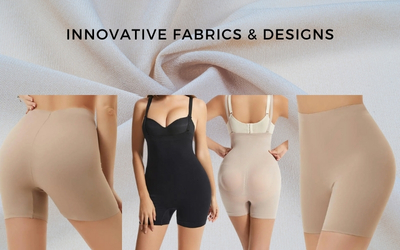
In recent years, advancements in textile technology have played a pivotal role in shaping the evolution of shapewear. Innovative fabrics such as microfiber, lycra, ice silk, and seamless designs ensure a discreet and comfortable fit beneath clothing. They offer superior support and also breathability, making modern shapewear as comfortable as it is effective.
Today, shapewear has evolved into a diverse range of garments, from high-waisted shorts to bodysuits, each catering to specific body areas. The emphasis has shifted from restrictive shaping to enhancing natural curves, empowering women to feel confident in their skin.
Celebrities and Shapewear: A Fashion Statement Paving the Way
Celebrities play a pivotal role in shaping fashion trends, and this includes Women Shapewear Clothing. One of the most notable transformations in recent years is the shift towards shapewear as outerwear.
Many celebrities like Kim Kardashian have championed the trend, showcasing shapewear as a fashion statement rather than a concealed secret. This cultural shift has propelled shapewear into the spotlight, with women proudly flaunting these garments as part of their ensemble.
The Rise of Body Positivity: Women Shapewear Clothing as a Choice
As the narrative around shapewear evolves, it empowers individuals to embrace their bodies. Today, women’s shapewear stands at a crossroads between the tradition and the modern.
No longer is shapewear being used as a tool for conforming to societal standards. Now, is a personal choice: A celebration of individuality. Embracing one’s body, shapewear now coexists with the growing movement of body positivity.
Choosing the Right Shapewear: Understanding Body Types
Selecting the perfect shapewear involves understanding individual body types and desired outcomes. Whether it’s tummy control, thigh shaping, or overall smoothing, there is a diverse range of options catering to specific needs.
Manufacturers now prioritize inclusivity, offering shapewear for all body shapes and sizes. Choose the right shapewear that aligns with your preferences and enhances your confidence.
Concluding Thoughts
Overall, the evolution of Women Shapewear Clothing reflects shifts in societal attitudes towards beauty and body image. It reflects fashion innovations and a continual quest for both style and comfort. It reflects a commitment to inclusivity and sustainability.
With heightened environmental awareness, the shapewear industry is making strides toward sustainability. The use of eco-friendly materials and practices reflects a commitment to a greener future.
As we embrace the diverse styles available today, it’s evident that shapewear has evolved beyond a mere fashion accessory. It has become a symbol of confidence and self-expression.
From the constricting corsets of the Victorian era to more modern and comfortable designs, this is the shapewear of the future. This undergarment has come a long way, leaving an indelible mark on the world of fashion.
Carol
shapli.com
Frequently Asked Questions
Q: How did shapewear originate?
A: Shapewear originated from the need for structured undergarments, evolving to meet changing fashion and societal demands.
Q: What impact did corsets have on women’s fashion?
A: Corsets played a significant role in shaping silhouettes and influencing societal perceptions of beauty and femininity.
Q: How did Spanx revolutionize the shapewear market?
A: Spanx revolutionized the shapewear market by introducing comfortable, modern designs that resonated with consumers, changing the industry landscape.
Q: Are there sustainable options in the shapewear industry?
A: Yes, the shapewear industry is increasingly adopting sustainable practices, including the use of eco-friendly materials and ethical production methods.
Q: How do celebrities influence shapewear trends?
A: Celebrities contribute to shapewear trends through public appearances, red-carpet moments, and endorsements, shaping consumer preferences.
Q: Can shapewear be inclusive of all body types?
A: Yes, contemporary shapewear brands prioritize inclusivity, offering diverse designs that cater to individuals of varying body shapes and sizes.
